
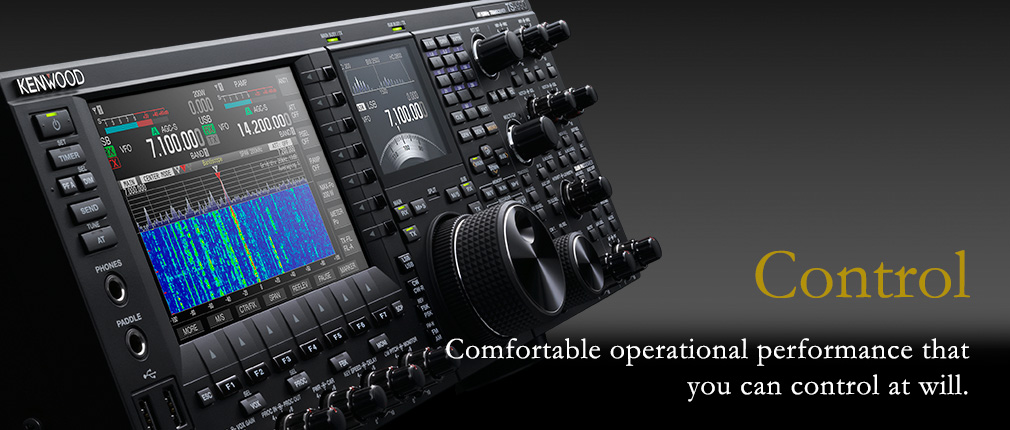

You can use the frequency function that switches legacy VFO A/VFO B by switching the main and sub band. Turn the sub band reception on and off using the RX key on top of the main knob, and switch between simplex and split using the TX key. A single glance at the LED lighting lets you know the current status.
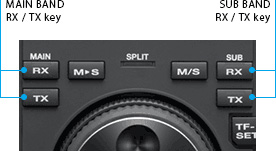

You can use the frequency function that switches legacy VFO A/VFO B by switching the main and sub band. Turn the sub band reception on and off using the RX key on top of the main knob, and switch between simplex and split using the TX key. A single glance at the LED lighting lets you know the current status.


Memory for a maximum of 120 channels is available. In addition to the repeater frequency, you can also preset beacons and transmission stations. You can easily call up the states of simultaneous dual reception using the dual channel memory.
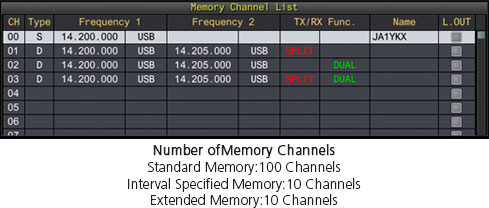

The dedicated sub-receiver has extensive interference elimination capability and is conveniently located to the right side of the main panel. Access the knobs and keys you need without hesitation. Share the use of main and sub band variable encoders by switching the operations object. An LED is lit when operating the sub band to prevent accidental operation (this can also be dedicated to the main encoder variable bandwidth). Other functions have been significantly upgraded in the TS-990S from the TS-590S, including band elimination filters, APF, mute, the addition of slope switching in theDSP IF FILTER, independent AGC OFF key, and simultaneous use of NB1/NB2.
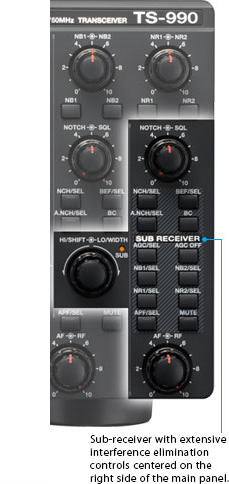

Frequently used functions are centrally placed in the immediate vicinity of the main and sub band knob. Supporting quick operation for radio sporting.
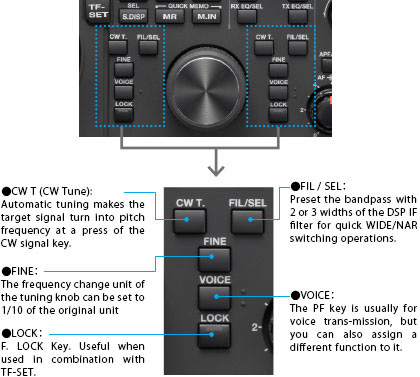

We equipped the front panel with two USB ports, a key jack, microphone jack and a headphone jack. Use USB memory or a keyboard.
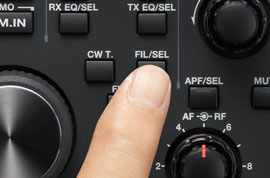

Switch to update mode and insert USB memory into the USB-A port on the front panel, and the update will automatically begin. Or access your USB memory from your PC by connecting your PC via USB cable to the USB-B port on the rear panel, switch to update mode, and a folder named TS-990 will appear on your computer.

There are a variety of I/O interfaces, including the microphone jack, analog audio input and output, USB audio interface, and optical digital interface. By combining DATA mode (1-3) with SSB/FM/AM modes, it is possible to easily switch between an external device for modulation and demodulation. Switch between DATA VOX function and mute for each modulated line.

In addition to the legacy presets, up to a maximum of three user settings can be configured. You can store the equalizer settings used for each mode and enjoy a very comfortable rag-chew session with others.
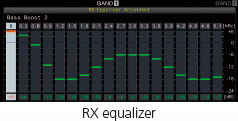

There are a variety of I/O interfaces, including the microphone jack, analog audio input and output, USB audio interface, and optical digital interface. By combining DATA mode (1-3) with SSB/FM/AM modes, it is possible to easily switch between an external device for modulation and demodulation. Switch between DATA VOX function and mute for each modulated line.

Using the ARCP-990 software (radio control software), you can control most functions from your PC.
Control the memory channel, settings, and functions using your PC. Download the free software from the KENWOOD website.
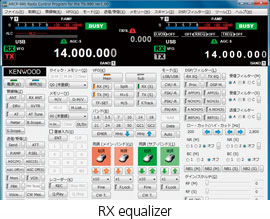

he LCD panel. Control via TNC (AX.25) enables more access to HF functions: XIT, mode switching, split-frequency operations on/off, memory shift, and frequency step selection. The transporter sends out its pre-programmed call sign via CW every 10 minutes.
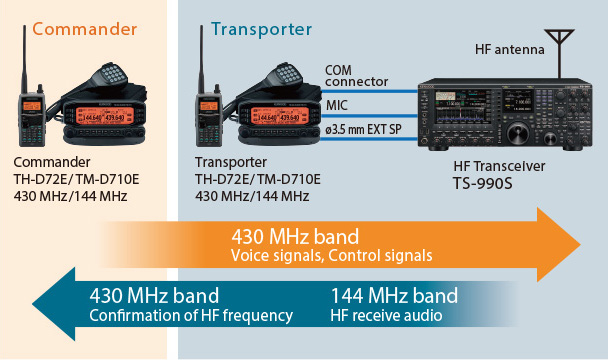
*KENWOOD SKY COMMAND SYSTEM II uses a pair of TH-D72A/TM-D710A transceivers.
TS-990S is limited to the following functions in the operation of the current KSS.
•Operation Commander [A / B] in the TS-990S is equivalent to [M / S].
•Memory channel is simplex operation only.
•Remote power On/Off is not available on Standby State Low Power Consumption mode.
•Control to the main band operation only.
Note: Refer to applicable Amateur Radio regulations to check whether you are permitted to use this function.